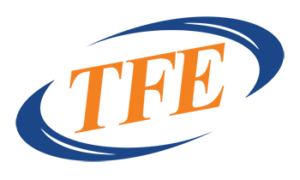6 things you should know about HEERF funding
Thanks to the Higher Education Emergency Relief Fund (HEERF), students and higher ed institutions can now access emergency financial support for Covid-related disruption. But how does the relief fund work? Who can claim financial aid, and what’s covered? Let’s break it all down.
There’s no doubt that the coronavirus pandemic has been hugely challenging for students and the institutions responsible for their education – both financially and mentally. The Higher Education Emergency Relief Fund (HEERF) is designed to alleviate some of this pressure. But the rules aren’t the simplest to understand. To help you make sense of HEERF funding and how it’s giving students the tools they need to continue their education, here’s a rundown of the six most important facts.
What is HEERF funding?
HEERF funds are intended to provide emergency grants to help students meet urgent, basic needs. This includes food, housing, course materials, technology, healthcare, and childcare due to the coronavirus. There is also an institutional portion to the funds. These funds can be used in the technology space to help support remote/distance and COVID safe learning measures.
Identifying technology pain points over the past year
Think about the technology struggles over the past year. It could be as simple as trying to create professional quality lesson plans and get these broadcasted timely. Or, these pains could be much more serious and disruptive: down time, business continuity issues when no one or minimal personnel are on campus, data storage issues with the huge spike in digital information being generated, spam, firewall breeches, hacking increasing as a result of more students and teachers accessing the network through non-secure private networks.
Once pain points are identified, think through what issues, if addressed, would most rapidly help IT holistically run smoothly. In the HEERF program, expect hard spending deadlines. Applicants must turn projects around quickly to maximize the funds. We can work with your organization to turn around quotes quickly and address these needs anywhere from device replacement purchases, upgrades and install to configuration and integration.
1. How much support is available under HEERF funding
The Office of Postsecondary Education received around $14 billion in HEERF funding thanks to the CARES Act.
- Each institution is responsible for distributing at least 50 percent of the allocation they receive directly to eligible students.
- The money covers expenses incurred by students due to teaching disruption and a change in campus services.
You’ll be advised how much you’re receiving from the fund once the application is submitted and approved. Unlike traditional grant programs though, you do not have to be prepared to draft a formal proposal or plan for proposal as the use is already predefined.
HEERF II and HEERF III have larger buckets with a slightly different breakdown between the student and institution portion, but with all three waves of funding, technology improvements are key.
2. How HEERF funding helps your institution
HEERF funding can help your institution, too – not just students! In fact, you can use the remaining 50 percent of your HEERF fund to cover the expenses you’ve incurred due to teaching students in a new way. Here are some examples of what you could use the money for:
- The infrastructure and software you need to transition to online teaching
- Training costs associated with preparing the faculty for distance teaching
- Admin costs, if they’re directly associated with the pandemic
So, for example, if you need help from a managed services provider or you’re upgrading your wireless network to support distance learning, you can pay for this through HEERF.
3. Which students can receive HEERF support
Only students who can or do participate in Title IV programs can access HEERF funding. Each Act and new HEERF has slightly different requirements and prioritization, but your institutions’ financial aid office should be able to help you navigate through the qualifications and applications required.
To be clear, this includes students who have filed a Free Application for Federal Student Aid.
4. The amount you can allocate to each student
There’s no hard limit on how much each student should receive.
However, since the goal is to distribute the funding as widely as possible, the US Department of Education suggests you don’t go above $6,195 per student. Receive a ‘random’ check in the mail for reimbursement for tuition? Unless you applied for it, this may be your institution voluntarily giving you a piece of their pie from institutional funds. You may still qualify for more.
5. How students can spend HEERF funding
According to the Department of Education, students can spend HEERF funding on “eligible expenses.”
- Eligible expenses are essentially costs the student incurred because there’s been a disruption to on-campus teaching.
- The expenses students can use the money for include food, technology, and course materials.
There’s no need to ask students to prove how they’re spending the money, but it’s OK to ask for receipts if you wish to do so.
6. The documentation you need
It’s crucial at the institutional level that you retain certain documents to show how you distributed HEERF funding. Here are some examples of what you might need:
- Proof that you released at least 50 percent of your allocation to students directly
- Documents showing how quickly you distributed funds to recipients
- Invoices or receipts for how you spent the remainder of your HEERF funding
You should keep all proof for three years.
For each drawdown, it’s recommended to spend funds within 3 business days, and no more than 15 days, so it’s critical for your team to have a plan for how those funds will be invested and maximized.
HEERF funding can help you access the technology and training your team needs to handle Covid-19 campus disruption. To learn more about HEERF and how to comply with the funding requirements, and to discover how HEERF can benefit your higher learning institution, contact us today.


